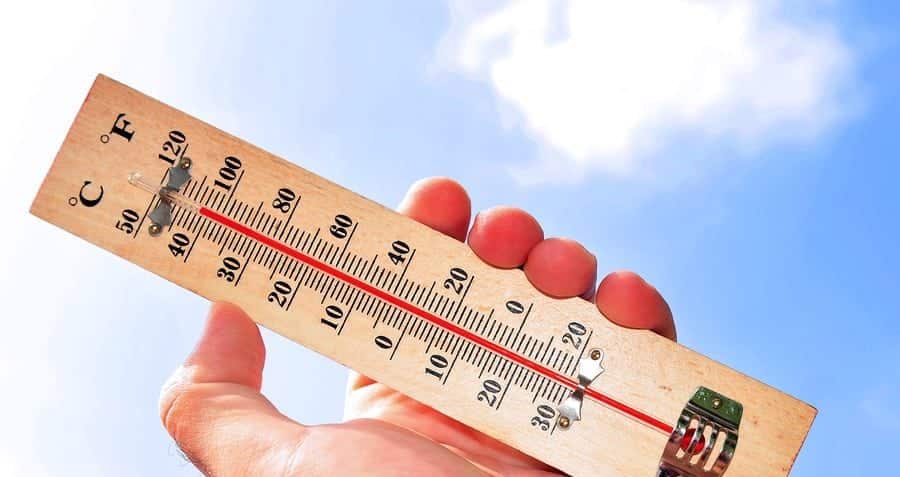According to Better Health Channel, there are many factors which can cause heat stress and heat-related illness, including:
- Dehydration– to keep healthy, our body temperature needs to stay around 98°F. The body cools itself by sweating, which normally accounts for 70 to 80 per cent of the body’s heat loss. If a person becomes dehydrated, they don’t sweat as much and their body temperature keeps rising.
- Lack of airflow– working in hot, poorly ventilated or confined areas.
- Sun exposure – especially on hot days, between 11am and 3pm.
- Hot and crowded conditions– people attending large events (concerts, dance parties or sporting events) in hot or crowded conditions may also experience heat stress that can result in illness.
What You Need to Know About Heat Stroke
Heat stroke is the most serious heat-related illness. It occurs when the body becomes unable to control its temperature: the body’s temperature rises rapidly, the body loses its ability to sweat, and it is unable to cool down. Body temperatures rise to 106°F or higher within 10 to 15 minutes. Heat stroke can cause death or permanent disability if emergency treatment is not provided. It is quite common in the summer months, when out partying or having drinks by the pool. Signs and symptoms of heat stroke can include:
- A body temperature above 103°F
- Red, hot, and dry skin
- No sweating despite the heat
- Rapid, strong and at times irregular pulse
- Throbbing headache
- Dizziness, loss of balance, and fainting
- Nausea and stomach cramps
What You Need to Know About Heat Exhaustion
Heat exhaustion is a milder form of heat-related illness that can develop after several days of exposure to high temperatures and inadequate or unbalanced replacement of fluids. Warning signs of heat exhaustion vary but may include the following:
- Heavy sweating
- Paleness
- Muscle cramps
- Tiredness
- Weakness
- Dizziness
- Headache
- Nausea or vomiting
- Fainting
- Skin: may be cool and moist
- Pulse rate: fast and weak
- Breathing: fast and shallow
What You Can Do for Someone With Heat Stress
If you see any signs of severe heat stress, you may be dealing with a life-threatening emergency. Have someone call for immediate medical assistance while you begin cooling the affected person. Do the following:
- Get the person to a shady area.
- Cool the person as fast as possible
- Monitor body temperature till it drops to 101°–102°F or lower
- If emergency response is delayed, call the local ER for further instructions.
- Do not give the person alcohol to drink.
- Get medical assistance as soon as possible.
Cases of Heat Stress in the Media
Heat stroke and heat stress can happen very quickly and the very young and very old are most at risk and this often brings with it a tragic end. This was seen in a powerful and deviating way in Florida as the massive hurricane Irma wreaked havoc as it moved across the state. Many died and some of the most tragic deaths that came from the storm are those that were innocents who were unable to defend themselves- the elderly.
“Authorities in Florida have declared the deaths of 12 of 14 nursing home patients who died after Hurricane Irma as homicides. Patients living at the Rehabilitation Center at Hollywood Hills were evacuated on Sept. 13 as Hurricane Irma hit the area. Eight residents died that day, and six others died in the following weeks… The patients died in September after the nursing home’s central air conditioning failed during the hurricane. Twelve of those deaths were ruled homicides due to heat exposure, and two other people died from causes not related to the heat conditions, the Sentinel reported. Hollywood Hills initially laid off 245 employees a week after Irma, but the nursing home was later shut down by the state” (Fox News).
Tips for Avoiding Heat Stress
Treating heat stress is possible but it is always better to prevent it as much as possible. At ESH Daily Advisor, they offer some tips to help combat heat related issues. While the focus is on the work site and keeping employees safe in the heat, the same basic tips can be applied to anyone in any situation here heat can be an issue:
- Pre-hydrate. Before activity starts, have workers drink up to 16 ounces of fluid. Then drink 8 ounces every 20 minutes during the activity.
- Drink flavored water. Plain water quenches thirst too quickly, so workers tend to not drink enough of it.
- Acclimate to the heat slowly, over 5 to 7 days of exposure. For new workers, institute a 20 percent increase of time in the heat for each day. Workers already used to these conditions can increase exposure slightly faster, but 4 days out of the heat means re-acclimation will be needed.
- Don’t wear a hat. It restricts heat loss through the head. Workers operating in direct sunlight can wear a visor.
- Wear loose, thin synthetic fabrics. They help the skin stay cool through evaporation. Avoid cotton as it soaks up sweat, forestalling evaporation.
Summer is here and the heat has arrived, so make sure you are ready and doing what you can to keep yourself safe while you have fun in the sun!
